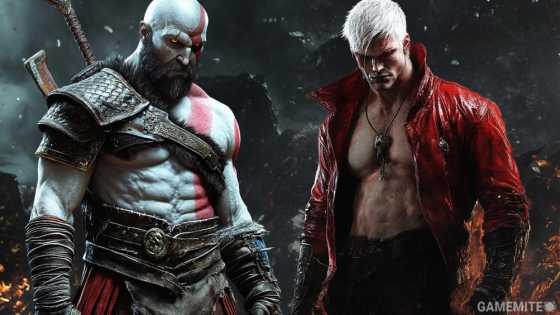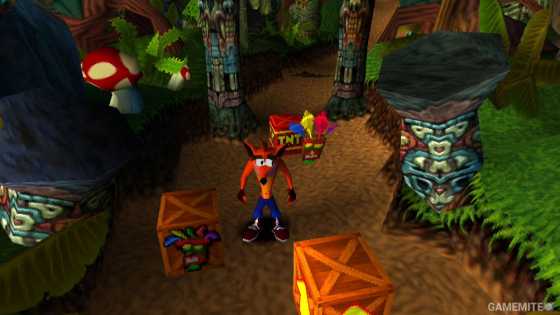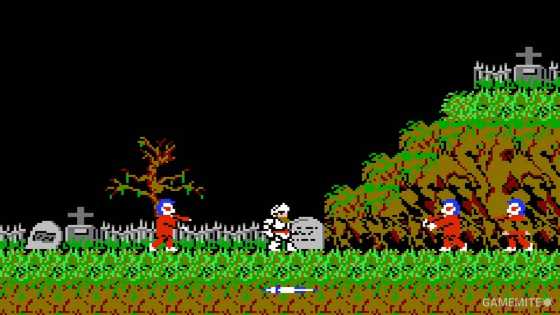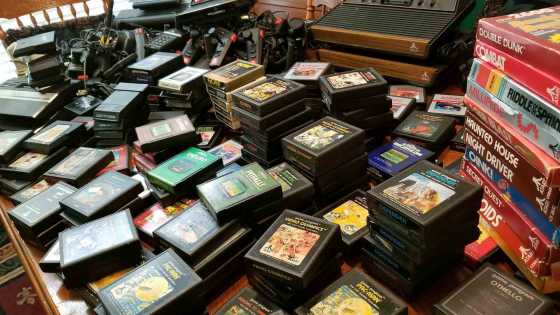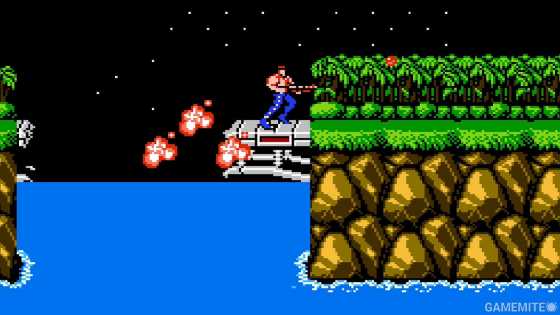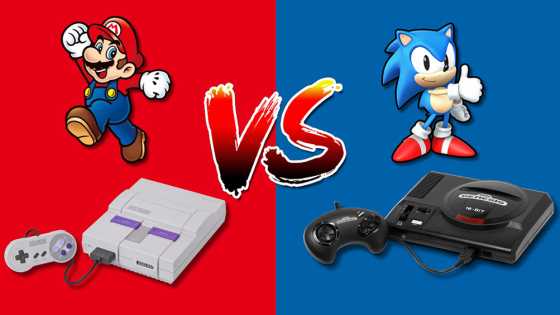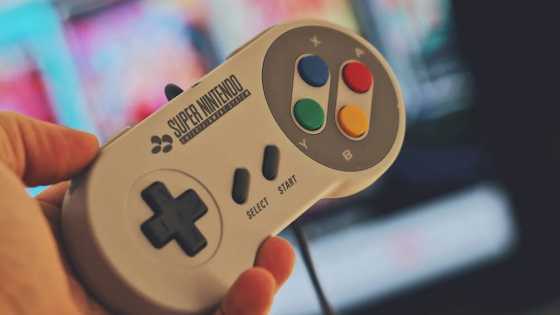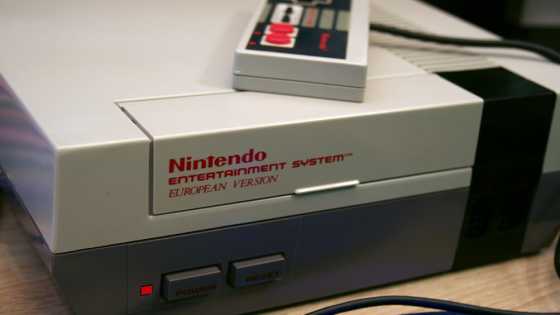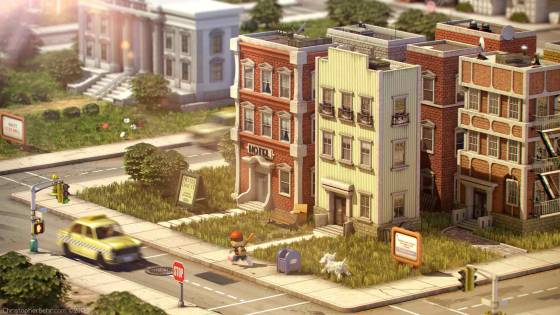Donkey Kong Has Been Having An Identity Crisis For Over 40 Years
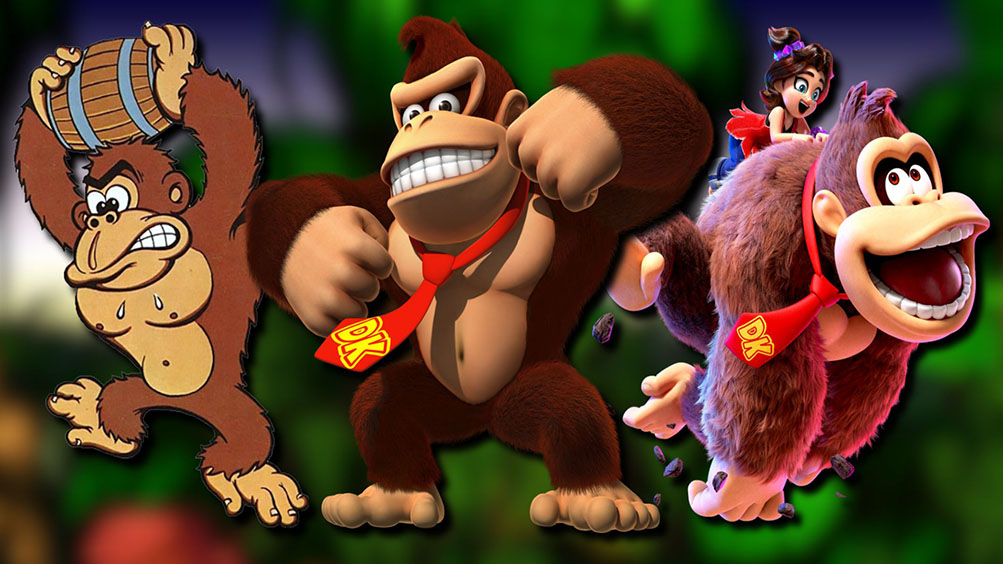
When people think of the biggest Nintendo icons, characters like Mario, Kirby, Pikachu or Link usually come to mind, but it’s also important to remember Donkey Kong, whose initial impact on both the company and the entire video game industry was as huge as Mario’s. But, of course, there’s a reason as to why DK isn’t as fondly remembered as other Nintendo mascots, and it’s the fact that he has been having a severe identity crisis since his very inception.
He started off as a typical video game boss, became a platforming hero during the 90s, was the mascot of a bunch of weird rhythm games during the 2000s and, to top it all off, his newest redesign, which Nintendo recently introduced in Mario Kart World and Donkey Kong Bananza, has already caused a lot of controversy among his fans. The Donkey Kong franchise has been lacking a concrete sense of direction for several decades, and as a result, it has gone through many different phases that we’re going to explore and analyze in this deep retrospective.
His Humble Beginnings As Mario’s Adversary
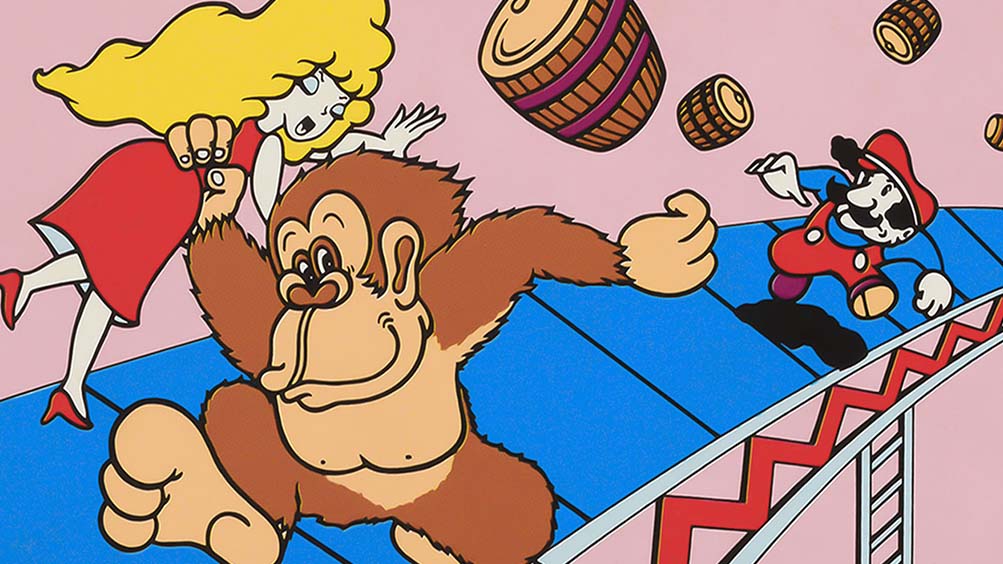
Before it joined the home console market, Nintendo made quite a big impact in the gaming industry by creating many critically acclaimed and innovative arcade games, with the most important one being obviously Donkey Kong, released in July of 1981. Curiously enough, this was originally going to be a game based off Popeye (which Nintendo actually held the license for at the time) but, due to technical limitations, the development team was forced to change all of the characters: Popeye became a mustachioed plumber named Jumpman, Olive became a beautiful lady named Pauline and Brutus became a giant ape named Donkey Kong. Of course, this new concept was also highly based on the 1933 classic monster movie, King Kong.
Donkey Kong completely revolutionized the gaming industry, thanks to its dynamic gameplay, challenging difficulty, and addictive gameplay loop, not to mention that it was the game that mostly put Nintendo on the map. Naturally, the company made a sequel, titled Donkey Kong Jr. less than a year later, in which the famous ape was captured by Jumpman and has to be saved his son, the titular Donkey Kong Jr. While it wasn’t as popular as the previous game, Donkey Kong Jr. still was very well-received and furtherly cemented Nintendo as one of the titans of the arcade.
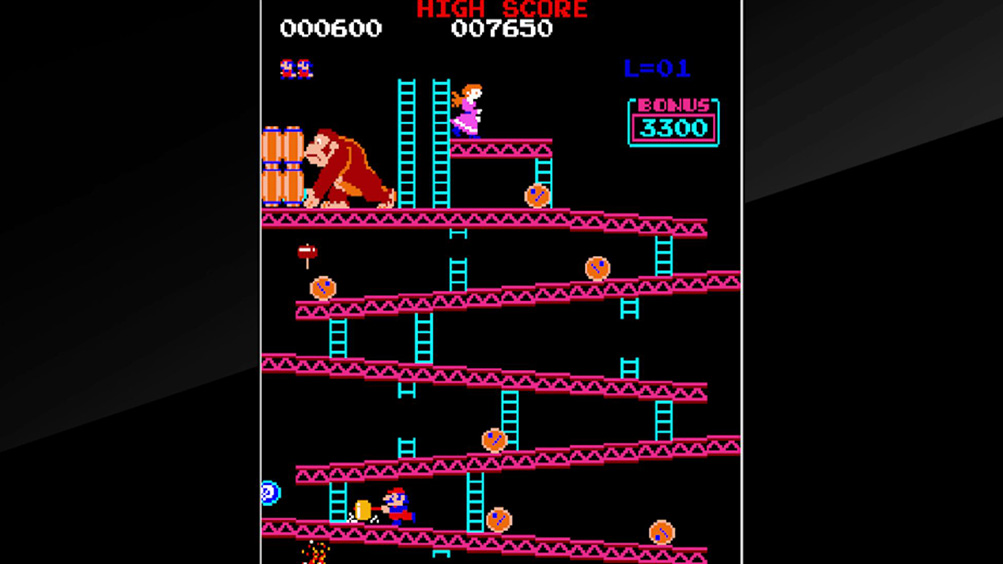
However, things immediately got sour for DK, as the company preferred to move on with the playable hero, Jumpman (now renamed Mario), and make him the face of the company instead. In 1983, it released Mario Bros, a brand-new arcade title that introduced Mario’s brother, Luigi, and changed their occupation to plumbers, not to mention that it also became a huge hit. Furthermore, Nintendo released Super Mario Bros for the Famicom/NES in 1985, which would go on to redefine what an adventure game on a home console could be, and quickly became one of the most important and influential video games ever made. Because of all this and more, Mario quickly became the new face of Nintendo moving forward, alongside his new friends and foes from the Mushroom Kingdom (like Princess Peach, Toad, and Bowser), while Donkey Kong was slowly left behind.
Of course, there was a third game in the Donkey Kong series released in 1983, simply titled Donkey Kong 3, but it was quickly forgotten by most people, and the fact that its main playable hero was another character named Stanley the Bugman (instead of Mario) was the first sign of the unfortunate new direction the giant ape’s career was taking. The original Donkey Kong was conceived as a contemporary urban adventure inspired by King Kong, which we may see as classic and/or nostalgic nowadays, but it was also kind of boring, generic, and unimaginative in comparison to other games of the time. At one point, Nintendo must have realized that ditching the series’ New York-inspired setting in order to throw Mario into a bizarre fantasy world was the best course of action, so the urban levels of the first arcade game were replaced by the colorful and vibrant Mushroom Kingdom.
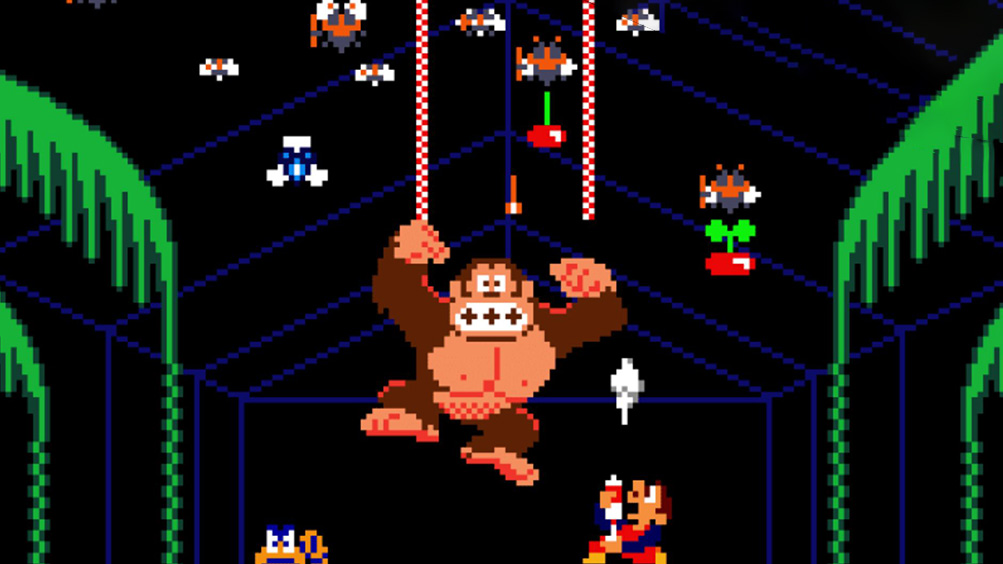
Because of this, Donkey Kong was completely absent from all of Mario’s home console adventures (with the only exceptions being ports of their previous arcade games) and Bowser became the plumber’s new arch-nemesis instead. The fact that DK himself was a pretty boring antagonist certainly didn’t help, as he was originally portrayed as a generic giant ape, with no personality and a very dull design. The only other character in the series, Donkey Kong Jr, was a little bit more likable and marketable, which led to him appearing in his own educational spin-off, Donkey Kong Jr. Math, and to becoming a playable character in Super Mario Kart. Needless to say, Donkey Kong became a footnote in the history of both Nintendo and the Mario franchise during the 1980s, which was a real shame, because his original arcade game was incredibly successful and influential.
But, out of absolutely nowhere, Nintendo decided to go back to this giant ape in the mid-90s, when it released a game simply known as Donkey Kong for the Game Boy.. This was the ape’s first new video game in more than 10 years, and it was actually really good, seeing as its gameplay is actually quite similar to that of the old arcade game, but it also introduced a vast collection of new levels and mechanics that kept things fresh and interesting for the player. Character-wise, Donkey Kong was still portrayed as a generic giant ape bad guy, but this was the first time in a long time that he faced Mario, and the huge critical and commercial success of this title proved that he could once again be a key part of the Mario franchise. However, something else happened at the very end of 1994 that completely changed the future of both the character and his series.
Rare Redefined The Franchise With The Donkey Kong Country Series
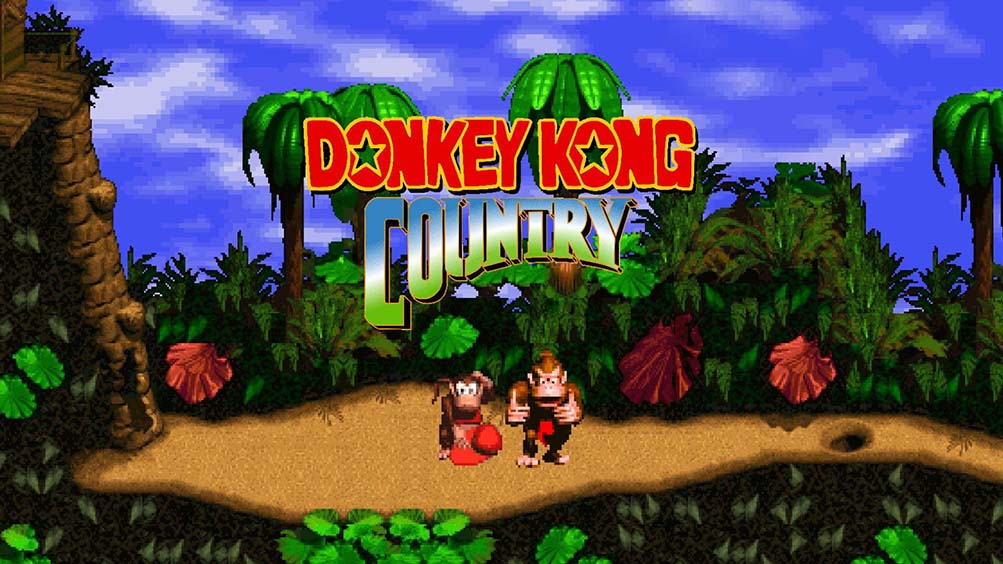
Nintendo was very much aware that it had ignored Donkey Kong for many years, which led to a shocking but very satisfying revival/reboot during the mid-90s. Back in 1993, several Nintendo executives visited the offices of a British game company called Rare, and they were blown away by its new digitization technique, which allowed the developers to create fully detailed 3D models and turn them into 2D sprites. The Big N ordered the studio to use this technique to make a game that would have “better graphics than Aladdin” and recommended that it used Donkey Kong as its main hero, seeing as the giant ape had been vastly underutilized by the company and, thus, Rare could have a lot more creative freedom with him.
This was a blessing in disguise for Donkey Kong because Nintendo had finally greenlighted a brand-new game with his face and name on the cover, made by a team of talented developers who knew how to implement impressive new technology that was going to blow people away. It was developed by a team of 12 people at Rare, who even visited the zoo in order to study the movement of the real gorillas, and they finished it a year after Nintendo’s original mandate. The final result was Donkey Kong Country, which quickly became a huge critical and commercial success for both companies.
Donkey Kong Country shocked audiences at the time, who couldn’t believe that a 16-bit Super Nintendo was able to render 3D models with so many details and features (which, of course, was possible thanks to Rare’s innovative digitization technique). But that was not all, because this game was also highly praised due to its smooth movement, incredible level design, challenging but fair difficulty, impeccable atmosphere, and a beautiful soundtrack by composer David Wise. Donkey Kong Country not only brought DK back, but it also successfully cemented him as one of Nintendo’s biggest and most beloved heroes during the fourth generation of home consoles.
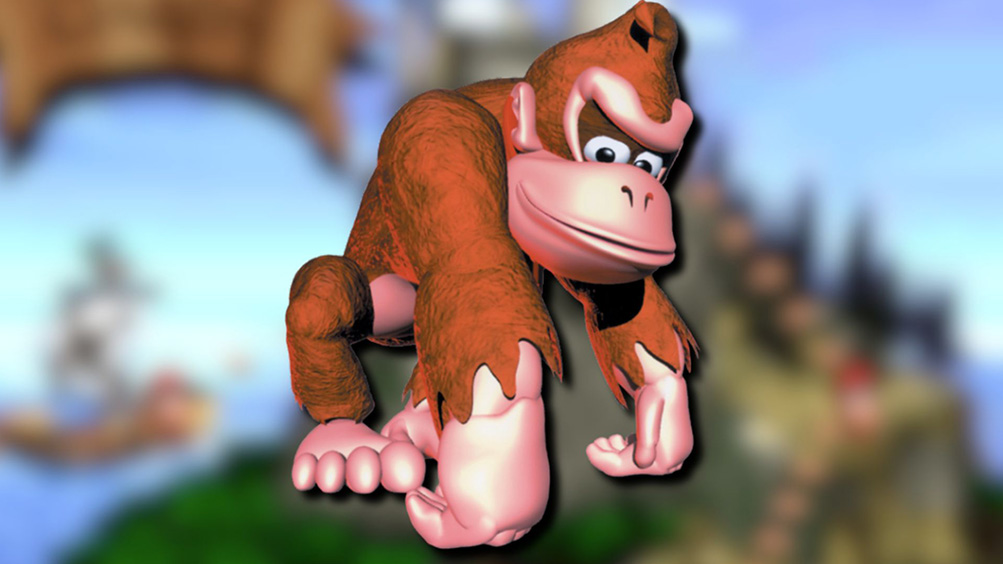
This was not only possible due to the actual game’s quality, but also by the titular character’s brand-new and modern redesign. Kevin Bayliss was the designer in charge of remaking Shigeru Miyamoto’s classic Donkey Kong design, and he ended up doing an excellent job. His new incarnation of DK no longer looked like a generic cartoon ape, but like an actual, distinct character with his own unique features and a lot of personality. He was now a lot more expressive and charming, and new elements like his red tie and the black outlines around his eyes really helped him stand out. But that was not all, because Rare’s designers also created a brand-new sidekick for Donkey Kong, a small and playful monkey called Diddy Kong, and completely ditched the Donkey Kong Jr. character in the process, which has caused a lot of confusion about who is exactly who among the fan base.
Additionally, Donkey Kong Country also introduced a bunch of other side characters, like Cranky Kong (who’s supposed to be the original DK from the classic arcade game), Funky Kong, Candy Kong, etc. This 16-bit game also featured a group of new reptilian bad guys called the Kremlings (which originated from another canceled Rare project) and their leader, King K. Rool, quickly became DK’s new iconic arch nemesis. Thanks to all this, the Donkey Kong series had finally gotten its own cast of characters, enemies, locations, music and its own gameplay style, which helped it build a brand-new identity of its own, disconnected from the Mario franchise. It no longer felt like Donkey Kong was a spin-off of another series, but it was an entirely new IP with its own personality, themes and characters that could catch the audience’s attention without any involvement from the famous red plumber.
The success of Donkey Kong Country led to a major partnership between Rare and Nintendo, and the British studio quickly started developing even more excellent games that were exclusive to the Big N’s consoles, like Killer Instinct and Killer Instinct 2. This close relationship between both companies allowed Rare to keep a close eye on Donkey Kong and to keep developing new games in the series it had just helped revitalize. In 1995, it released a sequel titled Donkey Kong Country 2: Diddy's Kong Quest, which saw DK being kidnapped by the Kremlings and Diddy Kong having to save him alongside his girlfriend, a new character called Dixie Kong. This game was better than its predecessor in every single way, with smoother movement, superior level design, and even more incredible music tracks, so it should be no surprise that Donkey Kong Country 2 is often considered one of the best SNES games of all time.
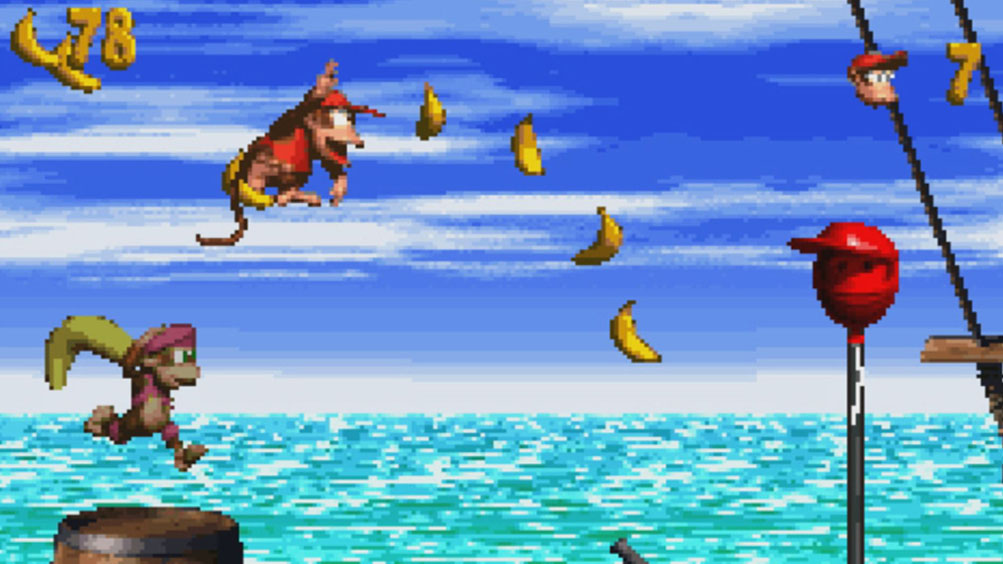
In 1996, Rare and Nintendo released the third entry in the series, titled Donkey Kong Country 3: Dixie Kong's Double Trouble!, which may not have been as well-received as its predecessors, but it was still highly praised for its controls, difficulty, level design, and music. Considering that this was a late SNES game that came out a few months after the launch of Nintendo 64, and yet it managed to sell a good number of copies, the mild success of DKC3 is nothing short of impressive. Rare was also in charge of the Donkey Kong Land trilogy, Game Boy versions of the SNES Donkey Kong Country games, but with a few differences to make up for the handheld’s technical limitations. While they were nowhere near as good, long, or beloved as their SNES counterparts, the Donkey Kong Land games still were technical marvels that showcased how talented the developers are Rare were and how inherently fun the core gameplay of their DKC games were, regardless of the system they were being experienced on.
But everything changed during the mid-90s, when Nintendo launched the Nintendo 64 and finally entered the world of gaming with 3D graphics. Rare was a key player during that era, seeing as it developed some of the best-received and best-selling exclusives in the N64’s catalog, with incredible 3D adventures like Banjo-Kazooie, innovative firstperson shooters like GoldenEye 007 and Perfect Dark and even a few interesting experimental titles, like Jet Force Gemini, Blast Corps or Conker’s Bad Fur Day. As Rare prioritized other projects and new IPs, the Donkey Kong series was mostly left aside during this era, with the only exception being 1997’s Diddy Kong Racing. However, the only real Donkey Kong element in this really fun, dynamic, and creative take on the kart racing genre was Diddy Kong himself, and every other character and location were specifically created for this game. In case it wasn’t already obvious, this was originally conceived as an original project, until Shigeru Miyamoto ordered Rare to use Diddy Kong – a character that audiences were already familiar with - in order to bring even more visibility to the game.
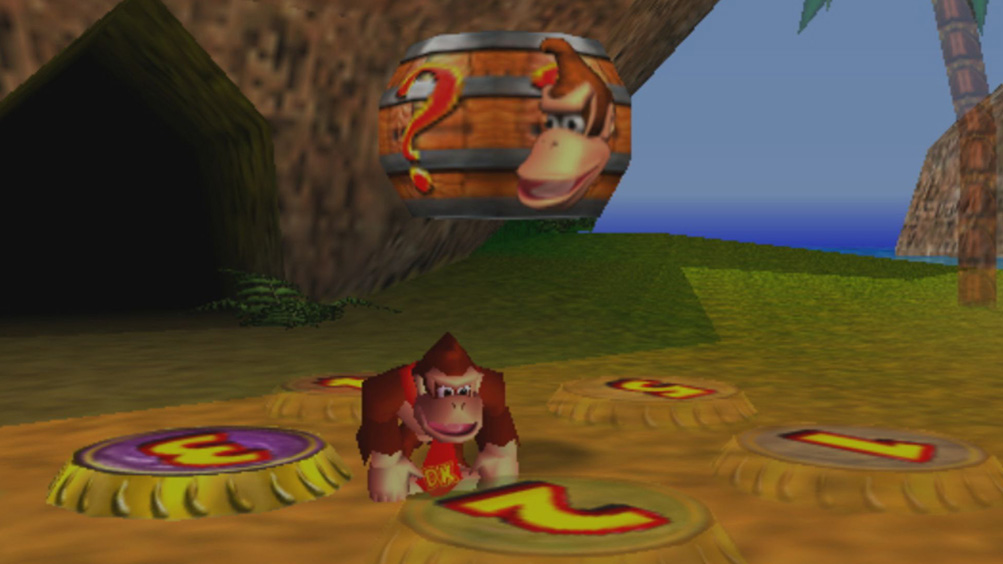
But in 1999, Rare finally went back to its roots and decided to help Donkey Kong make the transition to 3D, when it released Donkey Kong 64. This video game had actually been in development from the moment Donkey Kong Country 3 came out (which explained why Donkey Kong had been absent during most of the N64’s lifespan) and the studio spent many years carefully crafting the ape’s first fully 3D adventure.
The developers had learned a lot from the two previous collect-a-thons, Banjo-Kazooie and Banjo-Tooie, which inspired them to make their biggest and most ambitious adventure yet. Because of this, Donkey Kong 64 was highly praised for its controls, gameplay, and presentation, but many people also criticized it for its overwhelming amount of collectibles, multiple playable characters and tedious completion requirements. Donkey Kong 64 is obviously a very solid game, but most fans consider it to be vastly inferior to the Donkey Kong Country trilogy, and as a result, DK would go on to star mainly on 2D adventures in the following decade.
Nintendo Didn’t Know What To Do With DK After Rare’s Departure
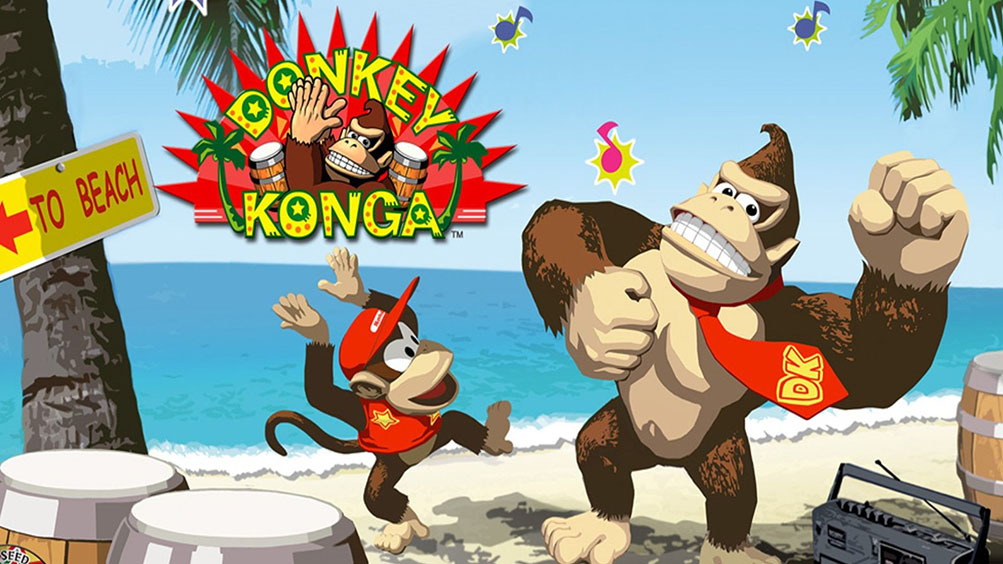
It’s safe to say that Donkey Kong was not only revitalized by Rare, but it was also kept alive by the British studio during the 1990s, with Nintendo only occasionally using his new design for Mario spin-offs, like Mario Kart 64, Mario Tennis, and Mario Party. However, the close relationship between both companies (and, by extension, the fate of the Donkey Kong IP) was completely altered by an unprecedented event that took place in the early 2000s. As video game development costs were getting increasingly higher and Nintendo made the questionable decision of not even trying to acquire Rare, the British studio was forced to search for potential buyers, and the winner was Microsoft, which purchased it for over 375 million dollars in 2002. Naturally, this meant that Rare would go on to only make Xbox exclusives, while the rights of the Donkey Kong series stayed at the place where it all started.
It’s quite evident that, despite all of its efforts, Nintendo had no idea what to do with the Donkey Kong IP after Rare’s unfortunate departure. For example: the company released Donkey Konga for the Nintendo GameCube in 2003, a rhythm game starring DK that was supposed to be played with its own specific peripheral, a bongo-shaped GameCube controller called the DK Bongos. This was admittedly a very fun game (even though it was obviously trying to capitalize on the rhythm game craze that was spwned by the success Dance Dance Revolution) but, weirdly enough - and much to the surprise of Donkey Kong fans - Nintendo went all-in on this concept during the early 2000s and, as a result, DK was synonymous with bongo-centric rhythm video games for a surprisingly long time.
Two different sequels, Donkey Kong 2 and Donkey Konga 3 JP, were released shortly after, and even a 2.5D platformer, Donkey Kong Jungle Beat, was released on GameCube in 2004. While this was more akin to what fans were asking for, it was extremely different from the Donkey Kong Country trilogy, mainly because it put a big focus on using the DK Bongos to make Donkey Kong move, jump and attack. Jungle Beat was received very well and it still fondly remembered by many, but it also encouraged Nintendo to keep going into this new weird and questionable direction. This was further cemented by the release of 2007’s Donkey Kong Barrel Blast on Nintendo Wii, a weird and experimental racing game that also utilized the DK Bongos (or alternatively, the Wii Remote and Nunchuk) as its main method of controlling. This spin-off received mixed reviews from fans and critics alike, seeing as it was pretty much a mediocre racing game that paled in comparison to something like Mario Kart, and it made it even more evident that Nintendo had no idea of what to do with the IP.
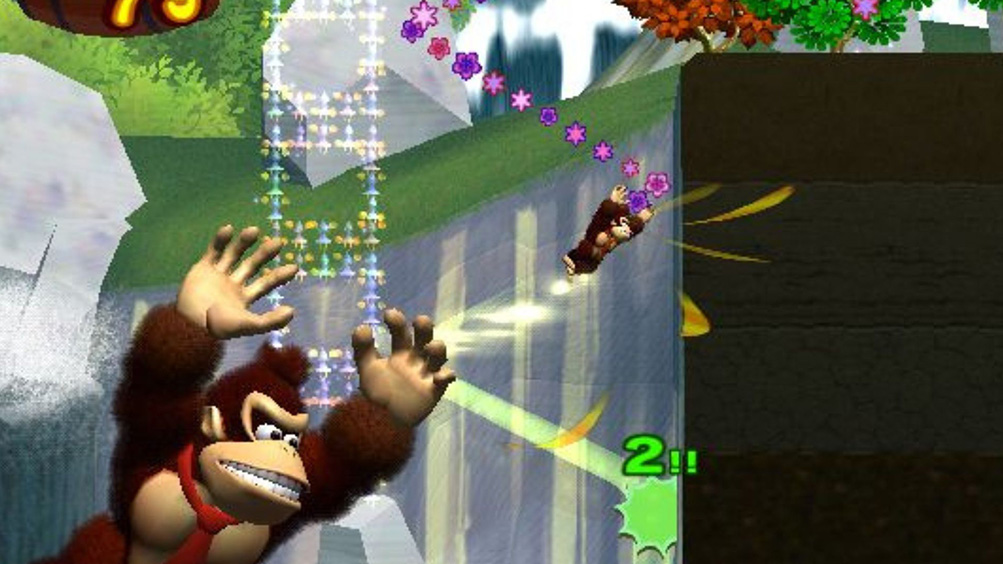
But, of course, the Donkey Konga trilogy and its related games are not the only thing that the Big N did with its iconic ape character during the 2000s. In 2004, it released Mario vs. Donkey Kong for the Game Boy Advance, a puzzle platformer that also served as a reimagining of the 1994 Donkey Kong Game Boy game. Since this a was fun, addictive and refreshing change of pace for both of the IPs involved, not to mention that it also sold and reviewed very well, it marked the beginning of the Mario vs. Donkey Kong subseries, with Nintendo making and releasing many sequels for Nintendo DS throughout the rest of the decade. While these were all very solid puzzle platformers, they also marked a dark reality for Donkey Kong fans: DK was unfortunately back to being Mario’s rival/enemy and not much else, especially since all of his friends (like Diddy, Cranky, Dixie, etc.) were nowhere to be seen in these new titles.
Even though Nintendo kept using Rare’s DK design, the company barely utilized all of the other iconic Donkey Kong elements the British developer had introduced in order to build the series’ new identity, with the only exceptions being brief cameos from characters like Diddy Kong and King K. Rool in other Mario spin-offs, like Mario Kart: Double Dash!! and Mario Super Sluggers. A noteworthy exception - and weird moment in Donkey Kong’s history - was the release of DK: King of Swing in 2005, a GBA puzzle game that not only starred DK and Diddy but it also featured some of their most iconic friends and foes, like Dixie, Cranky, Funky, and even K. Rool himself. Nevertheless, due to its slower gameplay and more conventional cartoony presentation, King of Swing felt, sounded, looked, and played nothing like the beloved Donkey Kong Country trilogy, which is why it was ignored and forgotten by most DK fans. Weirdly enough, Nintendo later released a sequel for the DS, titled DK: Jungle Climber, which also got a relatively positive reception, but it was still dismissed by most fans because it wasn’t what they wanted: a conventional 2D sidescrolling platformer.
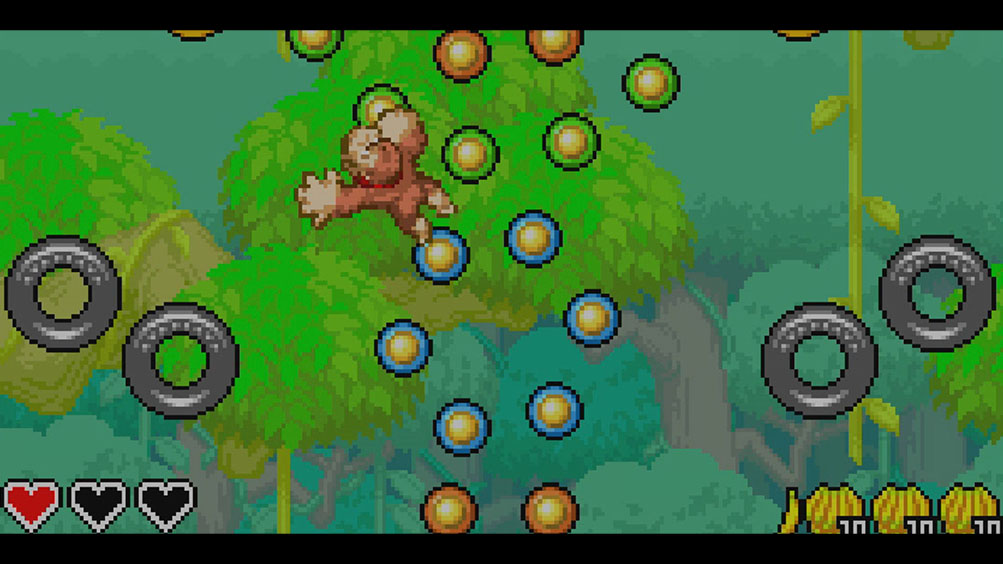
The most important thing to have happened to the Donkey Kong IP during the 2000s was the release of the GBA ports of the Donkey Kong Country trilogy, which were actually made by Rare, since Xbox didn’t have a designated handheld system of its own and thus, it most likely allowed the studio to make titles for Nintendo’s at-the-time new handheld system. These three ports had more colorful graphics, a revamped soundtrack and even a few new additional levels, not to mention that they also introduced a brand-new generation of gamers to the excellent Donkey Kong Country series.
But, sadly, that was all that happened to DK during the 2000s decade: from 2002 to 2009, he was relegated to starring in weird rhythm games, being Mario’s arch-nemesis for a bunch of puzzle platformers in which he was the main antagonist, appearing in Mario spin-offs and trying to relive his glory days via ports of his superior SNES 2D platformers. It could be said that Nintendo was at least trying to keep the IP alive (unlike other franchises that were flat-out dormant during that entire decade) but it was clear that an icon as big and beloved as DK certainly deserved much better…
Retro Studios Briefly Revitalized The Series During The 2010s
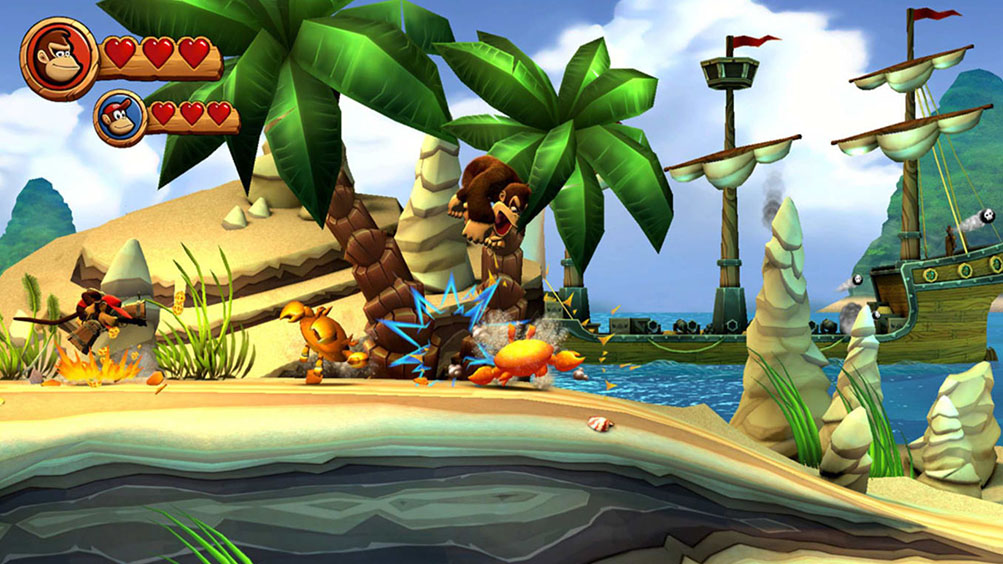
Retro Studios is a Texas-based developer that, in the early 2000s, pretty much saved and revitalized the Metroid franchise by making Samus Aran’s first foray into the world of 3D gaming: Metroid Prime for the Nintendo GameCube. This is still considered not only one of the best GameCube games, but also one of the best video games ever made, so it should be no surprise that it was followed up by two excellent sequels of similar quality: Metroid Prime 2: Echoes in 2004, and Metroid Prime 3: Corruption in 2007 (which is actually a Nintendo Wii game). Unbeknownst to most DK fans, Retro Studios was about to do for Donkey Kong the exact same thing it had just done for Metroid.
Shortly after the release of Metroid Prime 2, the talented developers at Retro Studios were already suffering “franchise fatigue” and expressed desire to tackle another Nintendo IP, and Donkey Kong seemed like the most promising and interesting one for them. They still went on to complete Metroid Prime 3 (as per Satoru Iwata’s request) so they could show off the motion controls of the Wii, but the moment that game was completed (and shortly after a bunch of people left the team) Retro Studios began working on a brand-new Donkey Kong game. Curiously enough, around the same time, Shigeru Miyamoto wanted to make a new Donkey Kong title, and Kensuke Tanabe suggested Retro Studios to him. While development on this new project started quite slow, mainly due to all the people who had recently left the studio, its pace slowly but surely kept getting faster and faster, especially after Nintendo and Retro Studios finally agreed on how to design its levels.
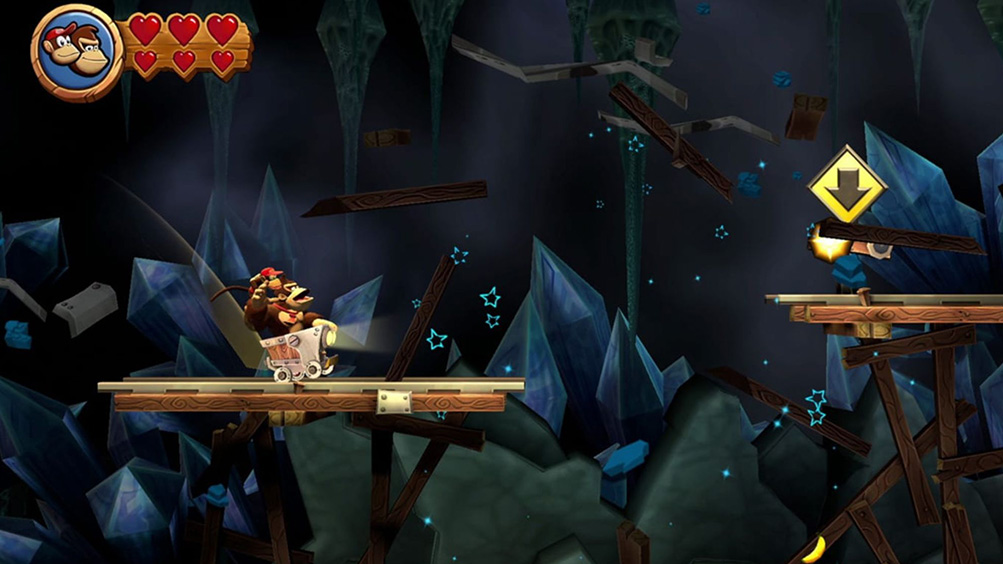
The final result was Donkey Kong Country Returns, which was released for the Nintendo Wii in November 21, 2010. This was the first conventional 2D platformer starring Donkey Kong and his friends in more than fourteen years so, naturally, longtime fans were very excited about it. Fortunately for them, the final game was (and still is) absolutely incredible: smooth controls, challenging levels, fun boss fights beautiful 3D environments, an excellent soundtrack and more; this was everything DK fans have been asking for over a decade, and they were all very satisfied by it (judging by the game’s critical and commercial reception). This was it: Donkey Kong Country was officially back!
However, there were some caveats: While Retro Studios maintained the classic Rare designs of Donkey Kong, Diddy Kong and Cranky Kong, Returns didn’t have many elements from the original Donkey Kong Country trilogy, aside from a few key locations (like Donkey Kong Island) and two animal companions (Rambi and Squawks). The most noteworthy example of this sudden change in style was the absence of King K. Rool and the Kremlings, who were replaced by a new group of enemies called the Tiki Tak Tribe, who were a bunch of magical sentient musical instruments. This meant that, while Retro Studios had obviously embraced the identity of the series that Rare had previously created for it, they preferred to pick and choose which specific aspects to use in its new game, most likely so the developers could create their own locations and enemies and not to rely solely on what Rare had made in the 90s. Needless to say, seeing talented artists and designers create new stuff is always a good thing, but after fans had been asking for a new Donkey Kong Country game for so many years, the lack of some of the series’ most iconic elements was a tad disappointing for them, especially considering that the Tiki Tak Tribe was a lot less fun and interesting than the Kremlings.
Nevertheless, Donkey Kong Country Returns was a huge success for both Nintendo and Retro Studios, and it completely reshaped the identity of the Donkey Kong franchise throughout the 2010s. Whenever Donkey Kong was represented in a spin-off, like in Mario Kart or Super Smash Bros., it was mostly by using of locations and elements from Returns, with the occasional brief appearance of stuff from the classic SNES trilogy. In 2013, Nintendo released Donkey Kong Country Returns 3D, a Nintendo 3DS port developed by Monster Games, which got rid of the game’s infamous motion controls and added a few new bonus levels. This was a clever decision from Nintendo, because the original Returns came out fairly late on the Wii’s life, and the player base of the 3DS was growing exponentially around 2013, meaning that more and more people were going to be able to experience this excellent 2.5D platformer.
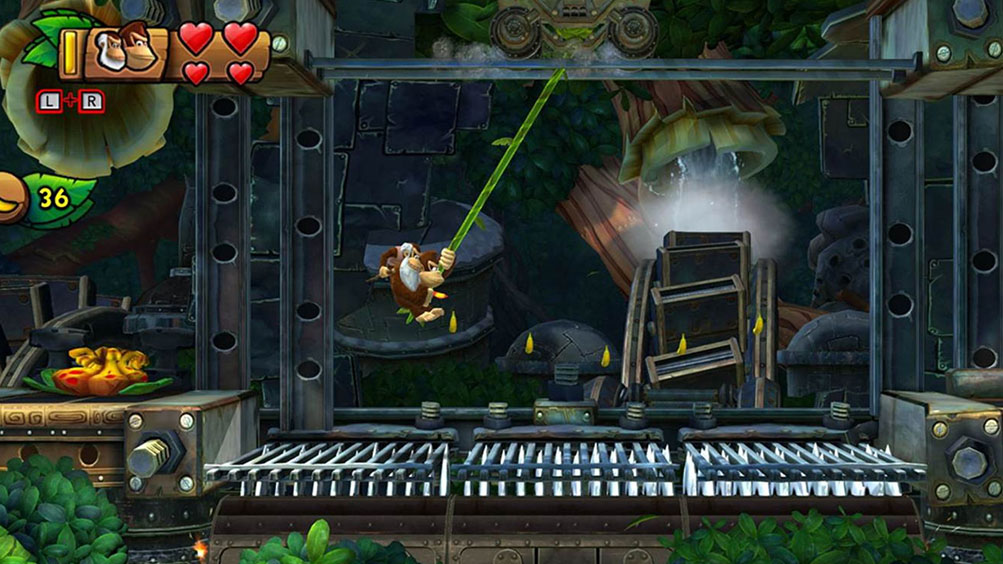
To make things even better, in February 21, 2014, Nintendo released Donkey Kong Country: Tropical Freeze for Nintendo Wii U, a sequel to Returns that was made once again by the talented developers at Retro Studios. This time around, the adventure had a very clear setting and theme from the get-go: a new group of enemies, the Snowmads, took over Donkey Kong Island by freezing it entirely with their magic powers and blew the Kong Family away from their home, so now they had to go back and reclaim it. This setup meant that most levels in Tropical Freeze had a snow/ice theme, which sounds like it could have gotten boring very quickly, but Retro Studios managed to keep the experience refreshing by creating some of the most distinctive, fun, challenging and well-designed levels in the entire franchise. On top of that, Tropical Freeze also brought back Dixie Kong to the Kong Family, and now she and Cranky were playable characters alongside Donkey and Dixie. Funky Kong also made his return, seeing as he replaced Cranky as the game’s shopkeeper. The enemies and bosses from the Snowmads had a lot more personality than the Tiki Tak Tribe, meaning that their inclusion was definitely a step in the right direction, but most fans would have still preferred for the Kremlings to come back instead.
The Wii U was one of Nintendo’s worse performing consoles and, around 2014, it was still lacking a solid system-seller that could improve things for the company. So, releasing Donkey Kong Country: Tropical Freeze on that home console was a great idea, because it not only could benefit its sales, but it also allowed Retro Studios to craft a beautiful adventure that looked and ran better than anything else in the Donkey Kong franchise at the moment. At the end of the day, it sold relatively well and it still is considered one of the best Wii U video games, but it wasn’t enough to save a console whose fate was already crushed by Nintendo’s questionable decisions. This explains why Tropical Freeze was ported over to the Nintendo Switch in 2018, which added Funky Kong as new playable character and polished some of the game’s minor issues. It should be no surprise that this port sold twice as well as the original, seeing as the Switch was way more popular and succesful than the Wii U.
And that was it for Donkey Kong during the 2010s. Yes, weirdly enough, after the release and success of Retro Studios’ two new Country games, nothing else of importance related to DK and his friends happened during this decade. Most fans were expecting a third game that would complete the new trilogy, but this never ended up materializing. In 2019, Nintendo announced that Retro Studios was taking over the development of the long-awaited Metroid Prime 4, which prompted many fans to ask: what was the studio developing before that? After all, Tropical Freeze came out in 2014, meaning that they had to be working on something in that five-year span. Is it possible that it tried to make a third Donkey Kong Country game that ended up being scrapped for some reason? Although it’s also completely possible that the developers at Retro Studios suffered “franchise fatigue” once again, and they decided to stay away from the Donkey Kong series for a while.
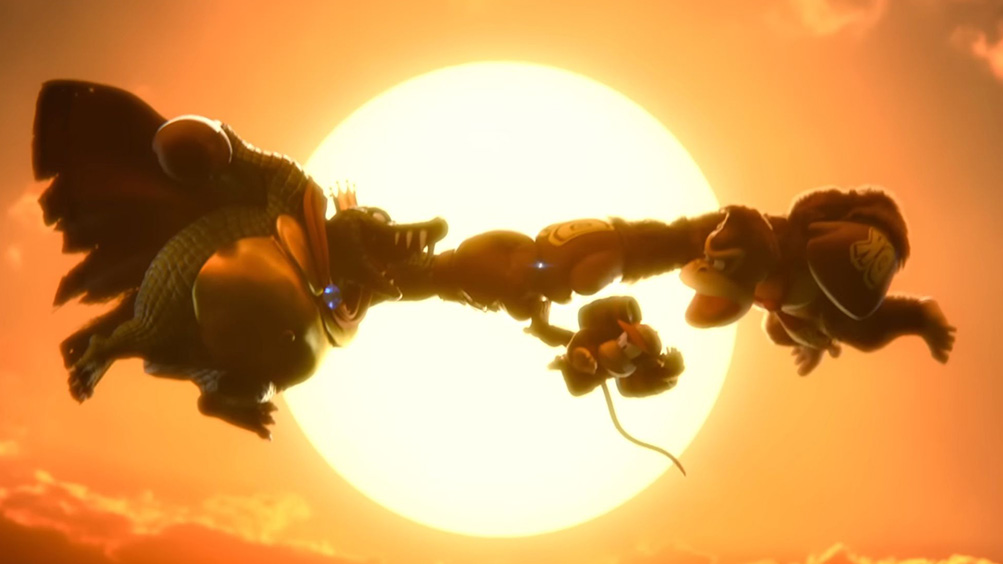
Obviously, Donkey Kong and some of his friends kept appearing in multiple Mario spinoffs during this time - with the long-awaited addition of King K. Rool as a fighter in Super Smash Bros. Ultimate being especially exciting - but the franchise was once again left behind right after it was finally brought back by a competent studio. This is a real shame, because Retro Studios was building its own identity for the franchise and it finally put it on the map so more and more Nintendo fans could enjoy it. For a moment, it really seemed like the future of Donkey Kong was the new direction that was built in Returns and Tropical Freeze, but those hopes slowly faded away when Nintendo stopped releasing new games during the mid-to-late 2010s.
Of course, 2.5D platformers were not the most popular game genre around that time, but there was clearly still a market for them, judging by the fact that many 2D and 2.5D platforming titles were released to critical acclaim during that time, from both established franchises (like New Super Mario Bros. U and Kirby: Planet Robobot) and from brand-new indie developers (like Shovel Knight or Celeste). On top of that, most fans wanted DK to come back in some shape or form, whether it was in a conventional 2.5D platformer ala Returns or in something more experimental, like a 3D platformer similar to Donkey Kong 64. After all, the only 3D game in the franchise had come out in 1999, and the 2020s were right around the corner. Maybe it was time for DK and his friends to return to this formula once again…
Donkey Kong’s Controversial Redesign Marks A New Direction For His Franchise
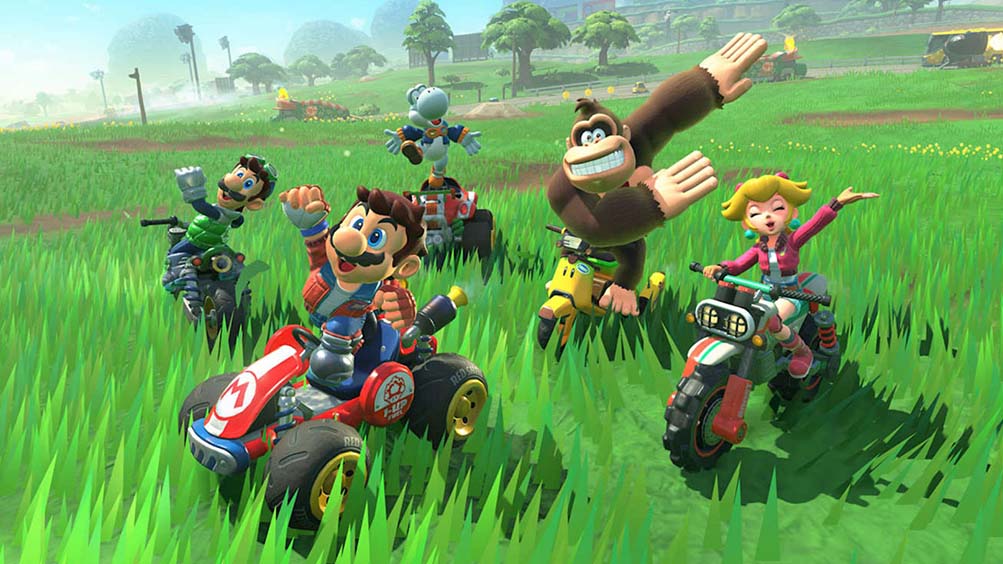
Of course, Donkey Kong’s presence during the early 2020s was far from non-existent, since he was the main antagonist of the Nintendo Switch remake of Mario vs. Donkey Kong (released in 2024), an HD remaster of Donkey Kong Country Returns launched on the same console in 2025 and he and some of his friends kept popping up in the occasional Mario spin-off. However, DK’s most prominent appearance during this time was in the The Super Mario Bros. Movie, where he was voiced by Seth Rogen. DK actually had an important role in the story, as he quickly built an intense, but endearing, rivalry with Mario himself. On top of that, his hometown, known as the Jungle Kingdom, is prominently featured in the film and a lot of iconic Donkey Kong locations, items, and characters from his games made brief cameos as well. Since both franchises have been interconnected from the very beginning, a significant part of The Super Mario Bros. Movie felt like a Donkey Kong short film, and fans were delighted by the fact that it gave this franchise so much love and mainstream representation for the first time in almost a decade.
However, the most notorious thing about The Super Mario Bros. Movie was the new designs of the Kongs, especially DK himself, who looked slightly different, with more cartoony and expressive features. Most people felt like this was just a one-time thing, seeing as the Mario characters also had slight redesigns in the movie, but, curiously enough, this was actually our first look at the new direction that the Donkey Kong franchise was going to be taking in the near future…
Donkey Kong’s prominent appearance in The Super Mario Bros. Movie also allowed Nintendo to create an entire Donkey Kong theme park as part of Super Nintendo World in Universal Studios. Simply named Donkey Kong Country, most of the design elements, buildings, and rides in this theme park are clearly based off Donkey Kong Country Returns and Tropical Freeze, with a few things from Rare’s classic trilogy, like the design of DK himself. This means that Nintendo is now finally comfortable with giving Donkey Kong the limelight and the more colorful and cartoony art style from the Retro Studios duology that is featured in the theme park is the direction and identity it obviously wants the franchise to keep in the next few years.
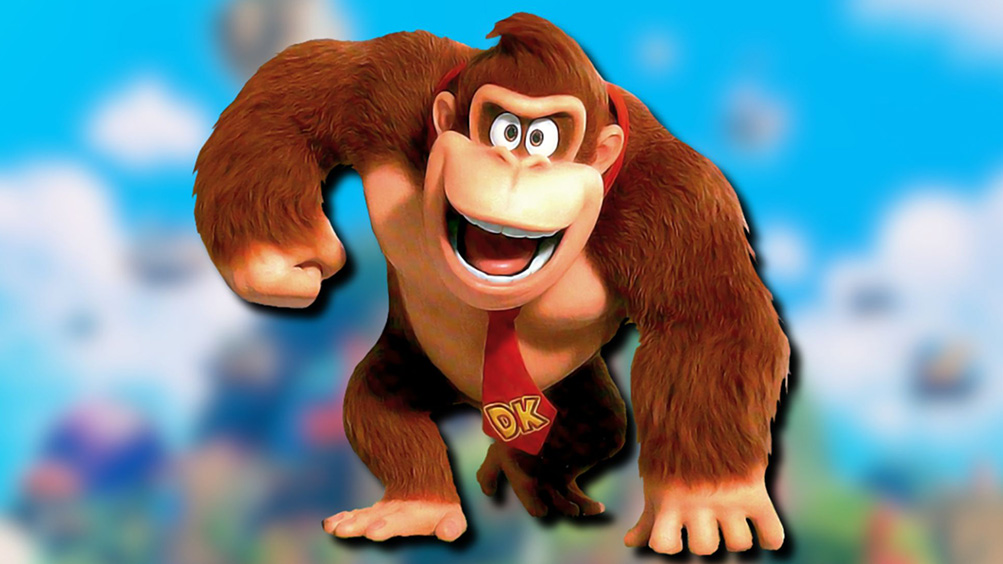
In January 2025, Nintendo unveiled the very first look at the Nintendo Switch 2, alongside one of its launch titles, Mario Kart World. However, DK fans quickly noticed something odd: Donkey Kong looked completely different in the footage, as it seemed like he had been redesigned for the first time in 31 years. This was quite a controversial change, and fans spent the next few months wondering (and complaining) about this new DK redesign, until we got a much closer look at it during the April 2025 Nintendo Direct. But, of course, that presentation also had a much more exciting and interesting announcement in it: the reveal of Donkey Kong Bananza, a brand-new 3D semi-open world adventure starring DK and his friends. This game gave us an even closer look at the new Donkey Kong redesign that Nintendo is clearly trying to push, seeing as it was not only used for Mario Kart World, but also appeared in some promotional materials. While some fans were obviously quite disappointed by the idea of DK looking so different after so many years, many others praised it for looking more charming and expressive, while also maintaining the things that made Rare’s original redesign so recognizable. Even Kevin Bayliss himself praised the new redesign (claiming that this time it was made by “real artists”) and went on to explain how he struggled to make his own DK design back in the 90s.
While most fan discussion revolved around Donkey Kong’s new appearance, the brandnew game Donkey Kong adventure in which he’s going to be making its debut (after Mario Kart World, of course) it’s also quite noteworthy in and of itself. Donkey Kong Bananza is the first 3D video game in the franchise since 1999’s Donkey Kong 64 and it looks like everything fans wanted from a new DK title: with colorful graphics, a vibrant new art style, a vast open-world, inventive power-ups, a lot of fun movement options and a slew of new characters that perfectly fit the franchise’s style. Because of all of this, Bananza not only looks like a spiritual successor to DK64 but also to 2018’s Super Mario Odyssey, another excellent 3D platformer that became one of the biggest system sellers of the original Nintendo Switch.

Curiously enough, the most recent Nintendo Direct revealed that a teenage version of Pauline is going to be DK’s sidekick in the game, which prompted many fans to wonder if Bananza is actually some sort of prequel to both the Mario and Donkey Kong series that it’s going to explain how New Donk City was built and why DK tried to kidnap adult Pauline in the original arcade game, and in the Mario vs. Donkey Kong series. Although it’s very hard to pinpoint how much of this is going to be true (especially considering that the regular, young, versions of Dixie and Diddy are also going to appear in the game) there’s no denying that Donkey Kong Bananza is going to completely redefine the Donkey Kong franchise in the new few years, especially if this prequel theory means that Nintendo is finally going to implement DK and his friends into the main Mario timeline, instead of keeping them aside in their own separate world. Needless to say, fans are already theorizing that, even though the VoidCo apes were revealed as the main antagonists, King K. Rool and the Kremlings are behind everything and they’ll finally make their long-awaited return to the franchise. But, of course, we’ll only find out if this is true when Donkey Kong Bananza comes out on July 17, 2025.
It’s obvious that Donkey Kong, gaming’s most iconic ape, really struggled to find his own identity throughout the decades, despite his significance to the video game industry: He started off his career as generic bad guy, only to be turned into a dumb but lovable hero with his own cast of friends and enemies during the 90s. This seemed like a perfect direction for his franchise to take, until Rare’s sudden departure left Nintendo trying many odd ideas for his franchise. Of course, Retro Studios’ early-2010s duology was a blessing and an undeniable step to the right direction, but the franchise was ultimately left dormant during the end of the decade as well, and we still don’t know why. Fortunately, Donkey Kong Bananza not only looks absolutely amazing as a game (and it will certainly allow Nintendo to sell even more Nintendo Switch 2s) but it also marks a fresh new beginning for the Donkey Kong series. If it sells and reviews well, it’s highly likely that the Big N will keep making more games with this art style and redesign. Regardless of whether they are in 3D or 2.5D, it’s very important that Nintendo never lets a franchise as important and entertaining as Donkey Kong ever again.



